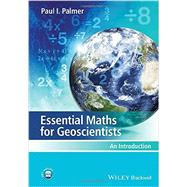Essential Maths for Geoscientists
An Introduction
Essential Maths for Geoscientists: An Introduction is an accessible, student-friendly introduction to the mathematics required by those students taking degree courses within the geosciences. Clearly structured throughout, this book carefully guides students step by step through the first mathematics they will encounter and provides numerous applied examples throughout to enhance students’ understanding and to place each technique in context.
Opening with a chapter explaining the need for studying mathematics within geosciences, this book then moves on to cover algebra, solving equations, logarithms and exponentials, uncertainties, errors and statistics, trigonometry, vectors and basic calculus. The final chapter helps to bring the subject all together and provides detailed applied questions to test students’ knowledge.
Worked applied examples are included in each chapter along with applied problem questions which are a mix of straightforward maths questions, word questions and more involved questions that involve the manipulation and interpretation of real and synthetic data.
The emphasis in the book is on the application of relatively rudimentary mathematics to real-life scientific problems within the geosciences, enabling students to make use of current-day research problems and real datasets.








